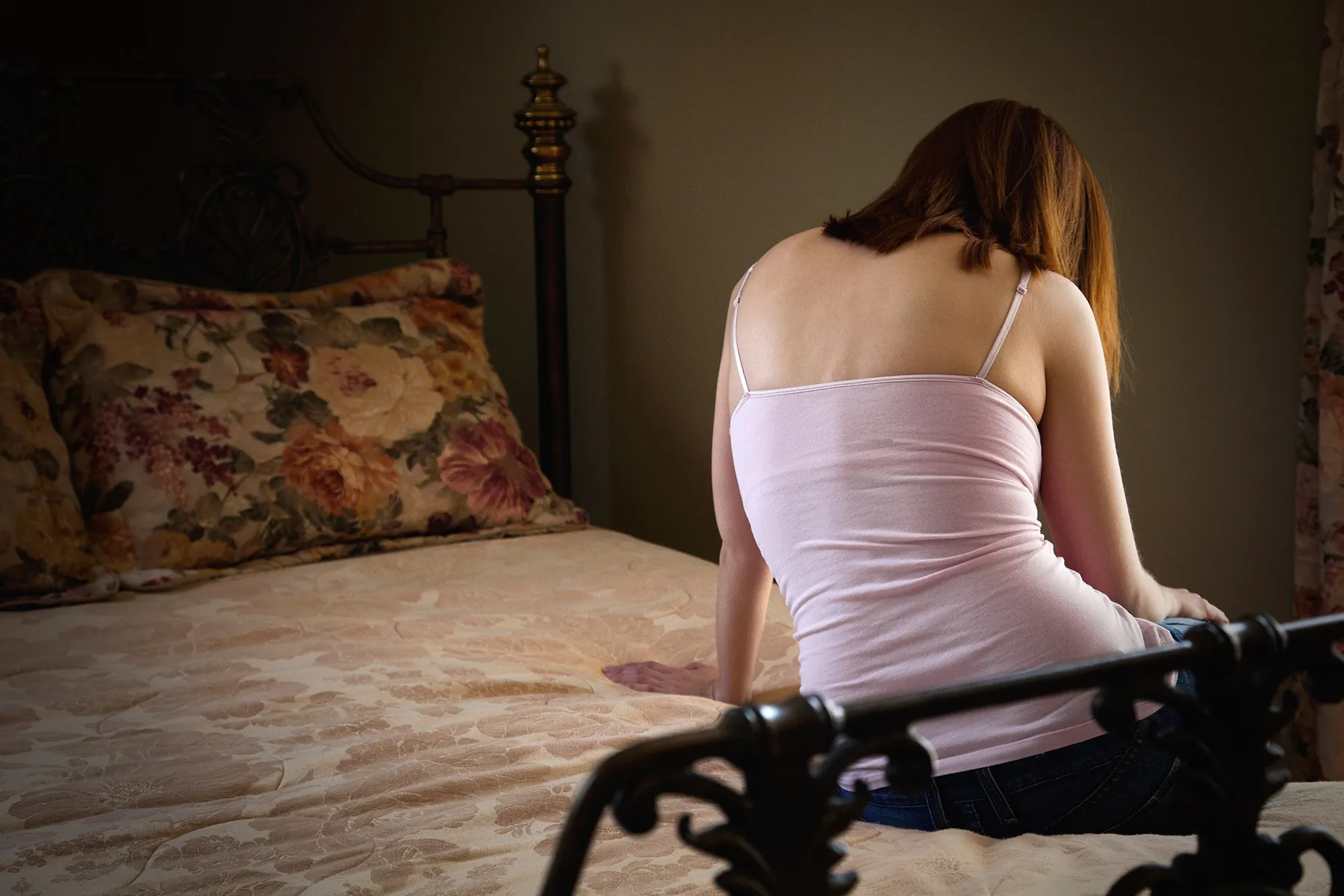Feds Offer ‘Fresh Start’ to Incarcerated Students
Student loan defaults are a big barrier to prison education. But the government has offered a “fix” that will significantly increase access to college-in-prison programs over the next few years.


Photo by Dragos Blaga via Unsplash
Amanda Newman would have been the ideal candidate for the associate’s degree program offered at the Women’s Huron Valley Correctional Facility in Ypsilanti, Mich. She’s already got some college experience and she’s eager to go back.
There is just one problem: she has three student loans that have been in default since before she went to prison.
Anyone who has defaulted on a loan is ineligible for federal financial aid such as Pell Grants – the current way that most people in prison pay for college. Despite seeking advice from college officials and trying to contact the Education Department about bringing her loans into good standing, Newman hadn’t been able to make any headway toward getting out of default.
Student loan payments pose a burden for many borrowers, but people in prison, especially those who don’t have family support on the outside, are often unable to do something as simple as pick up the phone to call their loan servicer or set up a repayment plan online.
This is a significant, little-discussed barrier as policymakers and colleges are preparing for full reinstatement of Pell Grants to the prison population next year.
But the Education Department last month announced a fix that will bring all defaulted loans into good standing, a move that could significantly increase access to college-in-prison programs over the next few years.
The department specified that people in prison also will qualify for a “fresh start” when the student loan payment pause, which has been in effect since March 2020, ends in August.
The “fresh start” policy will bring all eligible defaulted loans into good standing. All borrowers, including those in prison, will have: the default record removed from their credit history, their eligibility for federal student aid restored, and loan collection efforts stopped. They will also be able to consolidate their loans and enter into a repayment plan.
Fixing the student loan default problem was necessary “if the goal of restoring Pell Grants to people in prison was to expand college access,” said Bradley Custer, senior policy analyst for higher education at the Center for American Progress, a nonprofit group.
Details on when “fresh start” will be implemented, and how it will be communicated to people in prison, were not included in the department’s announcement.
“What we need now,” Custer said, “is a transparent plan from the department on how they will help these borrowers to stay out of delinquency and default after they are restored to good standing.”
The “fresh start” was part of the department’s larger announcement of 73 new Second Chance Pell sites, bringing the total to 200. Former President Barack Obama launched the Second Chance Pell program in 2016 as the first step toward reinstating Pell Grants for incarcerated students.
Pell Grants, which are available to low-income students, were eliminated for the prison population as part of the 1994 crime bill. In 2020, Congress lifted that 26-year ban, with full reinstatement of the aid for people in prison currently slated for July 2023.
Lack of Access
Getting out of default has become an urgent issue for both people wanting to go back to school after release and those hoping to enroll in college prison programs as Pell Grants become more readily available next year.
Many loans go into default when people go to prison as they aren’t able to access the necessary paperwork to request a deferral or continue to make payments. Others don’t even know they are in default, or that there’s a process to bring their loans back into good standing.
For Newman, a lack of information about her loans and an inability to call the Education Department meant she couldn’t enroll in the Second Chance Pell program Huron Valley offers through Jackson College.
There is no data available for how many incarcerated people have defaulted on their loans, but it’s a widespread problem for both the general and the prison populations. Twenty-five percent of all borrowers default in their first five years of repayment.
Incarcerated individuals interested in enrolling in the Second Chance Pell Experiment were twice as likely as the broader population to be turned away because they had defaulted loans, according to the Education Department.
Bobby Beauchamp, director of correctional education at Jackson College, estimates that around 10 percent of potential students interested in the college’s Second Chance Pell program have student loan default.
Outside of the “fresh start” policy, there are two ways people who have defaulted can restore their Pell eligibility. They can pay off the balance in its entirety, which can be a daunting prospect as more than 40 percent of borrowers in default owe at least $20,000.
The Education Department has also established a process called rehabilitation that allows people to make nine consecutive monthly payments of at least $5. That brings the loan into good standing and allows them to access federal financial aid.
Loan Write-Off
The Education Department also has another process for people with sentences of 10 years or more to have their loan balances written off by the government. That stops loan servicers from trying to collect, but it doesn’t restore Pell eligibility. Since September 2011, the government has written off the loans of more than 25,000 incarcerated borrowers, according to the Education Department.
Technically, the current rehabilitation process is the same for everyone, a spokesperson for the Department of Education said. It’s relatively straightforward for a borrower on the outside who can call the Education Department for information and then set up an online payment plan with their loan servicer. But the process is difficult – and in some cases nearly impossible – from behind prison walls.
For more than a year, Newman has been trying to bring her loan into good standing so she can take college classes.
She sent a handwritten letter to the Education Department last year requesting information on her loan and informing them that she was in prison. In response, she received paperwork for her counselor to fill out verifying her incarceration, which she promptly sent off. Almost a year later, she’d heard nothing about the status of her loan.
“They can give me all kinds of 1-800 numbers, and they can give me all kinds of addresses to write to,” she said. “But I don’t hear back from them.”
Like Newman, most people in prison don’t have access to the internet to look up information about their loans or set up payment plans. Toll-free 1-800 numbers are blocked unless they are on a special list approved by the prison administration, outgoing phone calls are limited to 15 minutes, and prisoners can’t receive incoming calls.
Newman is lucky because she has family support, she said, but she’s reluctant to ask her relatives to do even “one more thing.”
“My family is already taking care of my kids. And they’re already making sure to get money on my account, and they’re doing so much as it is,” she said.
Many people in prison are only able to manage their loan payments because they have help on the outside. Tydarius Newell, 34, was a full-time college student prior to going to prison in Florida in 2014. He had $30,000 in student loans from studying business at Warner Southern University and Tallahassee Community College. He assumed his loans had been put into deferment, a status where payments and interest are temporarily suspended, until he applied to Miami Dade College’s Second Chance Pell program at Everglades Correctional Institution in 2021.
Newell was able to set up an installment plan after sending the necessary documentation, but only because his family is able to pay the $5 a month for him. “I was told by the prison administration that if I didn’t have family to help set up payments, then I couldn’t go to college.”
This is another part of the process where bureaucracy gets in the way. He couldn’t rely on being able to make the payments from his prison account on time, even though he has money on his books, he said. To send payments, he has to fill out a form at the prison, which is then approved by the administration and forwarded to the Florida Department of Corrections central office in Tallahassee for processing.
Newman and other prisoners report that the multi-step transaction can result in delayed payments. But Paul Walker, press secretary for the Florida Department of Corrections, said the department has staff that process “special withdrawal” payments. “This process does not take several weeks,” he said, “nor does it prevent any inmate wishing to pay external financial obligations from doing so in a timely manner.”
A single late installment during the rehabilitation process means the borrower has to restart the nine payments all over again.
A $900 student-loan debt ultimately kept John Nelson, 57, out of college altogether. He applied for Miami Dade’s Second Chance Pell program in 2019 and again in 2020 but was rejected due to the 10-year-old debt.
“I couldn’t set up a rehab payment because my mother has dementia and nobody else could initiate the payments for me,” Nelson said. “We had the money but no one could help.”
The red tape, he said, made him give up. “Now I’m leaving prison next year without a degree.”
Piecemeal Solutions
Some state correctional departments have started to provide resources to assist in loan rehabilitation as part of reentry support. The Iowa Department of Corrections, in partnership with the state’s workforce development agency, has four reentry career planners that serve nine prisons.
Donshey Reed, 38, has been able to rehabilitate his defaulted student loan after working with Terry Zmolek, a career planner who helped him make phone calls and set up the payment plan. He’s made nine consecutive payments of $5, paid with the $.58 an hour he makes cutting hair in the prison barbershop. In March, he received a letter from the Education Department confirming his loan is in good standing.
Reed had originally enrolled in general education classes in his early 20s, but said he had to withdraw because he wasn’t ready for college. Then he was stuck with the loan balance. “I ended up owing and owing.”
Now he’s expecting to get out soon and wants to study cosmetology and massage therapy to complement the barbering apprenticeship he’s done in prison. “At this age, I’m mature and I’m ready to move forward with furthering my education,” Reed said.
While Reed is now eligible for Pell Grants again, he will need to continue to make payments or file the right paperwork every year to keep the loan in good standing. People are only able to rehabilitate loans once; a second default renders them permanently ineligible for additional federal financial aid.
While there’s no data specifically on incarcerated borrowers, nearly one in three borrowers who brought their loans back into good standing through rehabilitation defaulted for a second time within 24 months, and over 40 percent of borrowers did so within three years, according to the Student Loan Ombudsman.
“The consequence of rehabilitating your loan is that you have to start paying them,” said Custer of the Center for American Progress.
So how long will incarcerated borrowers have before they have to start making payments again after their loans are brought into good standing? Could they inadvertently go into default again and lose all eligibility for Pell Grants in the future? Those are just a few of the outstanding questions about how the new “fresh start” policy will work.
Default Fixes
As is the case with “fresh start,” many of the possible fixes for student loan default would improve and simplify the student loan repayment process for everyone – not just people in prison, Custer said. For example, everyone could automatically be placed in an income-driven repayment plan before their loans come due.
Until “fresh start” is implemented, the current solutions are piecemeal.
Some colleges have been improvising to help students. Lamar State College in Port Arthur, Texas, received a $263,000 grant through federal pandemic relief funds that allows them to pay off balances for students who have loan debt of $1,000 or less.
The college has been able to assist six incarcerated borrowers pay off their loan balances, said Wayne Wells, director of correctional education. About 30 percent of students hoping to enroll in Lamar State’s Second Chance Pell program are in default. If students aren’t eligible for Pell, there are state financial aid programs in Texas that many can take advantage of.
Similarly, Beauchamp of Jackson College said that some students who haven’t already earned a degree and aren’t Pell-eligible can still use state financial aid through Michigan Reconnect, a scholarship for state residents older than 25 that, unlike many state financial aid programs, doesn’t have restrictions for incarcerated students.
In another fix, the Michigan Department of Corrections included the 1-800 number for the Education Department’s Default Resolution Group in its updated list of approved numbers at the end of December 2021, but until recently Newman and other women at Huron Valley were unaware they could now call the Education Department directly.
Newman had heard of Michigan Reconnect scholarship, but initially didn’t think she’d be eligible. “It sounds too good to be true,” she said.
She started asking questions, and earlier this month found out that the scholarship will cover her tuition at Jackson College. She’ll be starting her associate’s degree in May.
And, now that the 1-800 number to the debt resolution center has been approved, Newman finally got through to the Education Department to find out her loan balance. The debt that has kept her out of college? $93.05.
Charlotte West, a John Jay Justice Reporting fellow, is a national reporter with Open Campus. Ryan M. Moser is an award-winning writer and recovering addict from Philadelphia serving 8 years in the Florida DOC for property crimes. This article was originally published in College Inside, a biweekly newsletter about the future of post-secondary education in prisons, and is reproduced with permission. Sign up for the College Inside newsletter here.

 Landwebs
Landwebs 



















